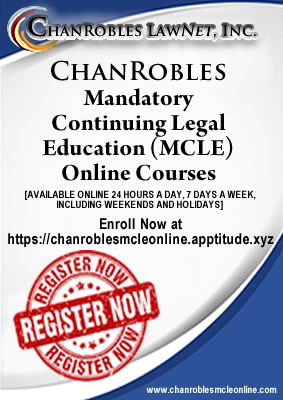ChanRobles Virtual law Library
SUPREME COURT DECISIONS
PLEASE CLICK HERE FOR THE LATEST ➔ SUPREME COURT DECISIONS
SECOND DIVISION
G.R. No. L-56564 October 18, 1982
FILOMENO BARIAS, Petitioner, vs. EDUARDA ALCANTARA and COURT OF APPEALS, Respondents.
Arturo B. de Castro for petitioner.chanrobles virtual law library
Ermelo P. Guzman for respondent.
AQUINO, J.:
In this agrarian case, the question is whether Filomeno Barias was "constructively ejected" from the seven-hectare land of his father, Domingo, where he was allegedly a tenant since 1945, when he was sixteen years old, and whether he should be maintained in the peaceful possession thereof.chanroblesvirtualawlibrary chanrobles virtual law library
Filomeno's stepmother, Eduarda Alcantara Vda. de Barias, contends that Filomeno was never a tenant on that land and that he entered the land after his father's death in 1977.chanroblesvirtualawlibrary chanrobles virtual law library
The resolution of that issue requires an examination of the voluminous record. The decisions of the trial court and the Court of Appeals and the briefs of the parties are not of much help in resolving that issue. * chanrobles virtual law library
Filomeno Barias was the son of the spouses Domingo Barias and Josefina Alvarez. Josefina died in 1953. Domingo, 53, contracted in 1958 a second marriage with Eduarda Alcantara, 34. Domingo died in 1977.chanroblesvirtualawlibrary chanrobles virtual law library
By his first wife, Domingo Barias had eight children named Ruben, Filomeno, Vivencio, Filomeno, Natividad, Celso and Jose. (Reynario is an alleged illegitimate child). Some of these children finished college. Filomeno did not reach high school.chanroblesvirtualawlibrary chanrobles virtual law library
By his second marriage, Domingo had five children named Abelardo, Virgilio, Cecilia, Donaldo and Enrique (Exh. 8). Domingo executed a will dated May 5, 1973 wherein the said seven-hectare land was devised to his second wife and children of the second marriage (Exh. 8). That will was probated in 1975 or during Domingo's lifetime.chanroblesvirtualawlibrary chanrobles virtual law library
Domingo's testate estate is pending settlement in Special Proceeding No. C-28 of the Court of First Instance of Laguna, Calamba Branch VI. Uldario Gloria was appointed administrator of the estate. Filomeno Barias and the other children of the first marriage appeared in the testamentary proceeding as oppositors.chanroblesvirtualawlibrary chanrobles virtual law library
With the help of a trial attorney of the Bureau of Agrarian Legal Assistance, Filomeno filed this case on August 1, 1978 in the Agrarian Court of San Pablo City to recover his supposed one-fifth share in the harvests of the said seven-hectare land on the theory that he was his father's tenant. He did not disclose in his complaint that his father was his supposed landlord and that the defendant is his stepmother who supposedly "constructively ejected" him by not giving him his tenant's share and that the disputed land was devised in his father's will to the second wife and children of the second marriage.chanroblesvirtualawlibrary chanrobles virtual law library
The record also shows that Filomeno and the other children of the first marriage filed against Eduarda Alcantara and her five children in the Calamba branch of the Court of First Instance of Laguna a complaint dated September 6, 1978 to set aside Domingo's will (Exh. 9). What happened to that novel or unusual action is not shown in the evidence.chanroblesvirtualawlibrary chanrobles virtual law library
Filomeno, 51 in 1979, testified that in 1945, when he was sixteen years old, his father, Domingo, allegedly instituted him as the sole tenant in the disputed land which consisted of four parcels which are not contiguous. According to the complaint, the land consists of fourteen small lots with separate Torrens titles located at Barrio Balayhangin, Calauan, Laguna. His brothers and sisters did not help him in cleaning the land and in planting it to coconuts and lanzones.chanroblesvirtualawlibrary chanrobles virtual law library
Filomeno declared that he planted on the land one hundred fifty coconut trees, one thousand two hundred lanzones trees, bananas and coffee. His father allegedly undertook to give him a one-fifth share of the harvests. He used to receive from his father about sixty to three hundred pesos everytime there was a harvest of coconuts and eight hundred to eleven thousand pesos (sic) every year when the lanzones were harvested (Exh. H).chanroblesvirtualawlibrary chanrobles virtual law library
He has been a tenant on that land supposedly for thirty-four years, For a time, there was an overseer on the said seven hectare land whose only duty was to be present at the harvesting of the coconuts and lanzones and to prevent strangers from entering the land, Note that Filomeno has his own tenant on his three-hectare land which he inherited from his mother (18-19 tsn October 10, 1979).chanroblesvirtualawlibrary chanrobles virtual law library
Filomeno explained that after his father's death on July 21, 1977 he continued to work on the land but his stepmother received the proceeds of the sales of the harvests. He was aware that the land was under administration. The administrator did not give him his one-fifth share of the harvests. He sued his stepmother because the judicial administrator followed his stepmother's instruction not to give him any share of the harvests.chanroblesvirtualawlibrary chanrobles virtual law library
Guillermo de Ocampo, 69, the barangay captain and a farmer, confirmed Filomeno's version that the latter worked on the disputed land and that Filomeno sold the lanzones and other fruits produced by the land (Exh. G).chanroblesvirtualawlibrary chanrobles virtual law library
De Ocampo, who had been a barrio captain for sixteen years, had known Filomeno since the latter was born. De Ocampo declared that he did not know Filomeno's exact status in relation to the land but he (De Ocampo) had seen Filomeno working on it. He did not know whether Filomeno was his father's tenant and whether Filomeno received a one-fifth share of the harvests from his father, Domingo (8-9 tsn October 3, 1979).chanroblesvirtualawlibrary chanrobles virtual law library
Octavio Samiano, 41, declared that from 1969 to 1977 he was Domingo's overseer on a two-hectare portion of the disputed land. He ascertained from the hauler the number of coconuts taken at harvest time. He received fifty pesos as compensation per harvest. Domingo allegedly told him, or Samiano saw, that Filomeno was given a share of the proceeds of the sale of coconuts harvested from a two-hectare parcel of land near Samiano's house. Samiano did not know why Domingo entrusted that work to him when Domingo's son Filomeno was already working on the land. He saw Filomeno working on the two-hectare land (Exh. B).chanroblesvirtualawlibrary chanrobles virtual law library
Crescenciano Arinda, 52, a neighbor of Filomeno whom he (Arinda) had known for more than thirty years, testified that he knew that Filomeno was a tenant of the seven-hectare land because he saw him working on the land (Exh. C). Filomeno's brothers and sisters were studying. Filomeno did not study and he was the one entrusted by Domingo to work on the land. Arinda did not know the share of the harvests given by Domingo to Filomeno.chanroblesvirtualawlibrary chanrobles virtual law library
Catalino Castro, 49, another neighbor of Filomeno, declared that he knew that Filomeno was his father's tenant on the seven-hectare land and that Domingo told him (Castro) that Filomeno was given a one-fifth share of the harvests of the coconut and lanzones (Exh. D), the same sharing arrangement that Castro had with his own landlord. Castro said that Domingo made Filomeno a tenant because Filomeno had a low educational attainment.chanroblesvirtualawlibrary chanrobles virtual law library
According to Castro, Domingo resided in the poblacion of Calauan while Filomeno resided in Barangay Balayhangin after he got married. However, on cross-examination, Castro said that he did not know Filomeno's share in the lanzones harvests although he (Castro) knew that Filomeno sold the lanzones by means of the pakiao system (23 tsn September 28, 1979).chanroblesvirtualawlibrary chanrobles virtual law library
Bernabe Fuliga, 57, another neighbor of Filomeno, declared that he had personal knowledge of the fact that Filomeno was Lite tenant of the seven-hectare lanzones land of Domingo with a share of the harvest (Exh. E). Fuliga admitted that there was also an overseer on the land named Octavio who was appointed by Domingo's wife and who merely saw to it that the plants "are in order" and who was present during the harvesting of the coconuts (40 tsn September 28, 1979). Fuliga did not see Filomeno actually receiving his share.chanroblesvirtualawlibrary chanrobles virtual law library
Leonardo, G. Castro, 55, a resident of Barangay Bagong Pook, Calauan, declared that he was the caretaker of a portion of the seven-hectare land in question for twenty-two years; that said portion consists of two parcels which are not contiguous and that he knew Filomeno Barias was the one who planted the lanzones in that portion and the plants in the remainder of the said land (Exh. F).chanroblesvirtualawlibrary chanrobles virtual law library
Leonardo testified that he did not know the share of the harvests given by Domingo to Filomeno. Leonardo was given a one-fifth share of the coconut harvests. He and Filomeno were the ones in charge of the land up to this time. Filomeno was assigned to the lanzones trees. Leonardo was assigned to the coconuts, bananas and coffee (5l-54 tsn Sept. 28, 1979). Leonardo clarified that in that two-hectare or two- parcel portion of which he was the carp-taker, Filomeno planted the coconuts and lanzones and he (Leonardo) planted the coffee trees and bananas (63 tsn Sept. 28, 1979).chanroblesvirtualawlibrary chanrobles virtual law library
Sergio Corcuera, 60, a resident of Barrio Balayhangin, declared that as the buyer of the coconuts from the seven-hectare land in dispute for thirty years, he came to know that Filomeno was the tenant thereof who cleared the land and planted the trees thereon and who received a share of the coconut harvests (Exh. A). Corcuera's house is about a hundred meters from the said land. He said that he paid the price of the coconuts to Filomeno. However, the receipts, Exhibits 1 to 7, prove that Corcuera also paid the price to Eduarda Alcantara, Filomeno's stepmother.chanroblesvirtualawlibrary chanrobles virtual law library
On the other hand, Eduarda Alcantara Vda. de Barias, 55, testified that the irrigated ricelands left by Domingo were given to the children of his first marriage. In 1960, the children of the first marriage inherited the properties left by their mother, Josefina Alverez, and those left by their uncle, Domingo's brother, consisting of ricelands, coconut lands and lanzones lands.chanroblesvirtualawlibrary chanrobles virtual law library
Eduarda declared that the plants found in the disputed seven-hectare land were planted by Domingo and some hired workers and that Domingo did not install any tenant on the land because the land was cleared by hired workers, namely, Mario Angeles and one Julian. Some children of the first marriage as members of the family helped in administering the said seven-hectare land.chanroblesvirtualawlibrary chanrobles virtual law library
She testified that the seven-hectare land consists of sixteen (16) lots, not fourteen lots. The third lot, or Lot 91-C, mentioned in Filomeno's complaint, with an area of six hundred square meters, does not belong to Domingo but was inherited by Eduarda from her mother, as shown in TCT No. 68318 (Exh. 10 and 11).chanroblesvirtualawlibrary chanrobles virtual law library
The second lot mentioned in Filomeno's complaint, with an area of 6,346 square meters, was conjugal property of Domingo and Eduarda, having been purchased by them in 1962 as shown in TCT No. 25610 (E xh. 12).chanroblesvirtualawlibrary chanrobles virtual law library
The fifth lot, with an area of 15, 822 square meters, was occupied by Eduarda and Domingo in 1966 as shown in TCT No. 39698. There was no tenant on the land (Exh. 15). It was occupied by Teresita Agapay but not as tenant.chanroblesvirtualawlibrary chanrobles virtual law library
Eduardo said that when Filomeno filed this tenancy case, he entered the disputed land and destroyed some plants therein as shown in Exhibits 14 and 14-A and the photographs, Exhibits 14-B to 14-I.chanroblesvirtualawlibrary chanrobles virtual law library
Eduarda was positive that Filomeno was never a tenant in the said land.chanroblesvirtualawlibrary chanrobles virtual law library
She declared that Filomeno sued her because after he learned that the said seven- hectare land was devised to her and her children, Filomeno wanted to get a share of that land (52-53 tsn October 17, 1979).chanroblesvirtualawlibrary chanrobles virtual law library
The trial court characterized Filomeno's evidence as a concoction. The following circumstances justify that conclusion: chanrobles virtual law library
1. The lawyer who assisted Filomeno in preparing the complaint made it appear that the land allegedly tenanted by Filomeno has an area of seven hectares. No sketch of the layout of the land, alleged to consist of four noncontiguous parcels or fourteen small lots, was presented.chanroblesvirtualawlibrary chanrobles virtual law library
It turned out that three lots, with areas of six hundred, six thousand three hundred forty-six and fifteen thousand eight hundred twenty-two square meters, belonged to Eduarda Alcantara or to her and her husband and were acquired after 1945 so that Filomeno could not have been instituted in that year as tenant on those three lots (about two and two-tenths hectares), as pretended by him.chanroblesvirtualawlibrary chanrobles virtual law library
That circumstance alone shows the untrustworthiness of Filomeno Barias' evidence or version in this case.chanroblesvirtualawlibrary chanrobles virtual law library
2. Filomeno's own evidence shows that there was an overseer for a part of the seven-hectare land and that a portion thereof, with an area of two hectares, was tenanted by Filomeno's witness, Leonardo G. Castro, for twenty-two years (Exh. F).chanroblesvirtualawlibrary chanrobles virtual law library
This is another circumstance destroying Filomeno's pretension that he was the only tenant on the seven-hectare land, clearing it and taking care of it.chanroblesvirtualawlibrary chanrobles virtual law library
3. The testimony of Filomeno's stepmother that Filomeno entered the disputed land only after his father's death and destroyed the plants therein, as depicted in the eight colored photographs (Exh. 14-B to 14-I) and as corroborated by the witness, Teresita Agapay (Exh. 14-A), is more credible than his version that he continued as a tenant on the land after his father's death and that he was "constructively ejected" therefrom.chanroblesvirtualawlibrary chanrobles virtual law library
Eduarda Alcantara reported to the judicial administrator and to the probate court the illegal entry made by Filomeno, with the help of other persons, and the acts of vandalism perpetrated by them, as shown in a pleading dated August 24, 1978. She prayed that the administrator be directed to stop Filomeno from occupying the land and that the latter should answer for his acts of malicious mischief (Exh. 14).chanroblesvirtualawlibrary chanrobles virtual law library
4. With particular reference to the lot with an area of 15,822 square meters, Eduarda testified that the land was already planted to coconuts when she and her husband purchased it from Sabas M. Capili on February 28, 1966 for P8,000 (Exh. 13 and 15). They planted it also to lanzones. As already stated, it was untenanted and it was occupied since 1969 by Teresita Agapay as a sort of caretaker (patao) whose job was to clean the land and prevent pilferage of the coconuts, lanzones and coffee.chanroblesvirtualawlibrary chanrobles virtual law library
Teresita testified that Filomeno Barias entered that one and a half-hectare land in June, 1978 or about one year after his father's death. He had nothing to do with that land before that date. He was not a tenant in that land (27-28 tsn October 29, 1979). His theory that he was "constructively ejected" and his claim for damages are baseless.chanroblesvirtualawlibrary chanrobles virtual law library
Filomeno did not rebut the testimonies of Eduarda Alcantara and Teresita Agapay. Moreover, he sued the wrong person. He should have sued the judicial administrator, not his stepmother, who was not administering the land. The said land is under custodia legis in the testamentary proceeding.chanroblesvirtualawlibrary chanrobles virtual law library
WHEREFORE, the decisions of the trial court and the Court of Appeals are affirmed. Costs against the petitioner.
Makasiar (Chairman.), Concepcion, Jr., Guerrero, Abad Santos, De Castro and Escolin, JJ., concur.
Endnotes:
* The trial court's decision is incoherent in some parts because of its penchant for, using dangling dependent or subordinate clauses beginning with the word "that" as if they were declaratory sentences. A fact pleaded is made to appear by the trial court as if it were a factual finding. The decision is confusing.chanrobles virtual law library
Anyone who studied basic English in the elementary school knows that a subordinate clause should not perform the function of a declaratory sentence. Some writers, like James Joyce, resort to that gimmick for literary effect or to make their literary style distinctive. A trial judge should not do so in his decision.


